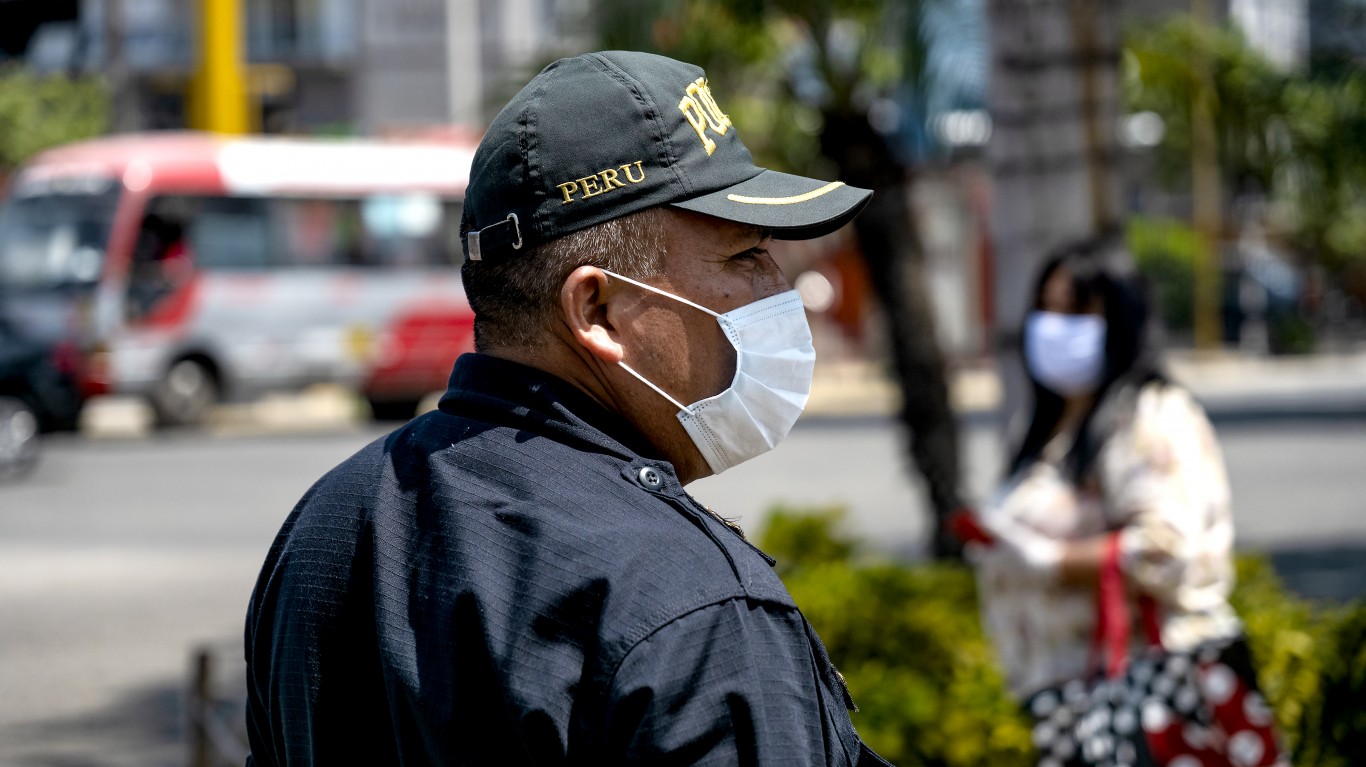Health and Healthcare
This Is the Country COVID-19 Has Hit the Hardest

Published:

Among the measurements of how hard any country, state or city has been hit by COVID-19, one of the most widely used is the count of confirmed cases in relation to the total size of the population. By that yardstick, Peru is the nation hurt the most by far.
Peru ranks 43rd in the world based on total population. It ranks sixth in confirmed COVID-19 cases at 794,854. That is behind the United States (7,120,729), India (5,908,748), Brazil (4,692,479), Russia (1,143,571) and Columbia (798,317).
Peru’s population is 32,510,453. That of the United States is 329,064,917. India’s is 1,366,417,754, Brazil’s is 211,049,527 and Russia’s is 145,872,256.
Peru’s confirmed case count is 69% of Russia’s. Its population ratio is 22%. Deaths in Peru are also unusually high. The current fatal case count is 32,073. Russia’s is 20,225. Peru’s confirmed case count also is rising faster than Russia’s, based on its population size. Yesterday, Peru reported a confirmed case increase of 5,924. Russia’s comparable count was 7,523. A COVID-19 analysis by the University of Miami Institute for Advanced Study of the Americas commented about Peru: “Its cumulative death rate of 95 per 100,000 people is the worst of any nation.”
Why is Peru so hard hit? The government’s efforts to control the disease have not been the problem. The government locked down the country on March 15, very early in the progress of the global spread. Both the military and the police heavily enforced the lockdown. Men and women were allowed to leave on alternating days during the week. The curfew throughout most of the country starts at 10 p.m. and also runs all day on Sunday.
Marcos Espinal, chief of the department of communicable diseases at the Pan American Health Organization, offered an analysis of why Peru is so deeply troubled, commenting to the Miami Herald: “Peru is home to several population groups living in a situation of vulnerability” and “a high informal economy where it is difficult to exercise social distancing.” Most food in cities is sold on the streets, where social distancing cannot be enforced. Urban populations are unusually poor in most cases and live in crowded quarters, with residences literally on top of one another.
Another reason Peru has suffered so greatly is a financially poor government that cannot support strong health care systems. Gross domestic product per capita is $13,500, which ranks Peru 120th among the world’s nations. The most recent measurement of poverty by the World Bank put it at 26.1%. Peru’s medical systems lack the ability to treat many cases. The problem has been so acute that the World Health Organization has needed to supply endotracheal tubes, antibacterial filters and pulse oximeters.
As cases and deaths have slowed in the past few weeks, Peru has started to reopen an economy that has been brutally hurt by the outbreak. Now, it faces the risk that the reopening will trigger another spread of the disease and keep Peru on the list of countries most ravaged by the disease.
Retirement planning doesn’t have to feel overwhelming. The key is finding expert guidance—and SmartAsset’s simple quiz makes it easier than ever for you to connect with a vetted financial advisor.
Here’s how it works:
Why wait? Start building the retirement you’ve always dreamed of. Click here to get started today!
Thank you for reading! Have some feedback for us?
Contact the 24/7 Wall St. editorial team.